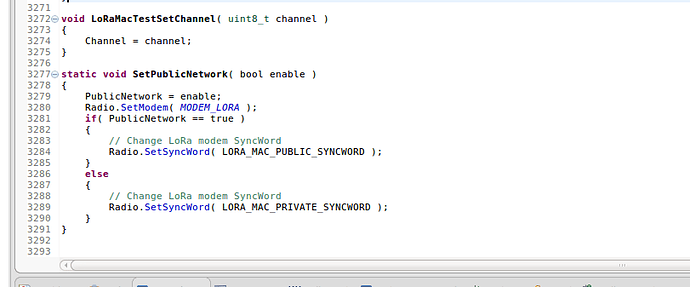Thanks for the answer @brocaar.
I do not think that this is the problem because this sync word is already configured in my end-node (i believe): In my file LoRaMac.c I have this function SetPublicNetwork
As I said, in a #define I set the public network to false or true, depending on the value, the syncword is set to the radio. The value for LORA_MAC_PRIVATE_SYNCWORD = 0x12 and LORA_MAC_PUBLIC_SYNCWORD 0x34.
I looked at the gateway and the loraserver to find any configurations about this syncword but I do not got anything. What i don’t know is if this syncword is already configured on my gateway or loraserver.
